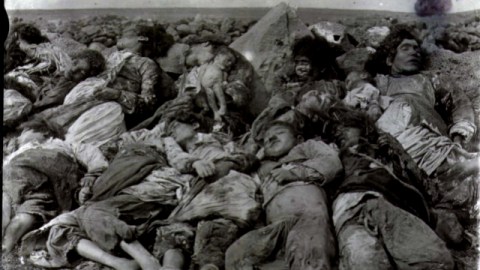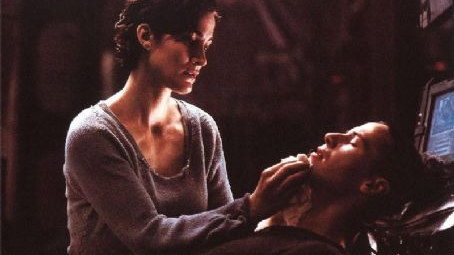The End of Atrocity: A Manifesto

GUEST POST BY LINA SRIVASTAVA
This Manifesto is a fluid document, which we have begun to draft and will continue to refine throughout this project, with the participation of many. It is an organic process: all are invited to participate.
———————————————————
“Never Again.”
These two words have become the most uttered and the least meaningful in a world that still witnesses genocide, crimes against humanity and atrocities. These two words were first said in the context of mass genocide, after the Holocaust in 1948, when the United Nations General Assembly passed the Genocide Convention. And we as a world said we would never let something like that happen again on our watch. We had a set of guidelines, a commitment, a promise.
And yet it happened, over and over again.
Throughout the history of our species, we have created divisions among people, based on region, religion, belief, economic advantage and political expediency. We have devised ways of creating a sense of “otherness” — of peoples who don’t look like us or believe as we do — that has made us capable of seeing the “other” as less than human. This has resulted in injustice, inequality, and in the worst cases, in premeditated massacre and ethnic and cultural cleansing.
What can possibly stop this?
The time has come to build a vision for a world without atrocity. Leaders as diverse as The Dalai Lama and Martin Luther King have shown us the need for vision to build a path to lasting peace and progress. But, to date, we don’t have a collective vision for a world free from atrocity. We’ve had conventions, treaties, sanctions, military interventions, technological interventions, social movements, cultural artifacts and discussions. But If we as a global community don’t have a vision of a better future, how will we really create one?
This Manifesto represents the collective thoughts of visionaries around the world on a promise and a path to build a vision for a world without genocide, atrocity or crimes against humanity.
FIRST: There is no “other.” We are all one, irreversibly connected.
SECOND: Human beings are members of a global community, and we are connected. If atrocity can happen to one group, it can happen to any other, because when it happens to one of us, it happens to humanity.
THIRD: We must achieve universal respect for each other. Each generation must find ways to explicitly affirm and reaffirm its commitment — through ritual, story, technology or practice– that each individual will accept responsibility for the well-being of each other individual in the world, regardless of who or where that individual is, and that each of the billions of the global masses is accountable to all the others for safety, security and life.
FOURTH: We have always been connected, but technology and communication now connects us directly in ways that reduce the “otherness” of people. Access to the tools of technology and communication must be used to help us grow our collection of stories of being human and will put a human face on that which we used to view as “other.”
FIFTH: There are always patterns and warning signs before an atrocity. Ensuring universal access to tools of technology and communication will help us collectively disseminate and listen to cries for help. We will pay attention to these patterns and signs and keep watching for them, to stem the possibility of devolution into violence.
SIXTH: We acknowledged there will always be hostilities, conflict, and perhaps even war. We must work toward building, supporting and enriching our growing culture of human rights– through rational means of technology and networks, strong cross-border civil society interventions, institutional and governmental treaties and efforts, but also through cultural means, through humanism, emotion and sentimentalism, reflected in narrative, stories, art and media.
SEVENTH: We aim to create a new “soul” for humanity, one that is infused in a new path away from what we have been to each other and toward one that gives us the means to not inflict undue harm on innocent bystanders. We should aim to foster the creative in humans, and to encourage achievements that add to universal livability, prosperity and satisfaction, and we must invest in universal accountability and mass empathy to do so.
EIGHTH: Our history books and cultural narratives are a succession of leaders who led us to glory in war and subjugation– and we’ve accepted it as the norm. We need to move away from that, to histories and narrative about the caring and nurturing of families and communities, of culture, art, commerce and design– those things that bind a community to itself and create communities across borders.
NINTH: We must create and sustain balance among the genders, in roles of power and decision-making, and in true equality and respect. We must protect and integrate as equals those members of society we perceive as weaker, less successful, less worthy or capable, or living slower, simpler or lives connected to ideals that may differ with ours. We must invest in the economic prosperity of all, and acknowledge that any of our economic and political systems that create inequality in turn create instability and vulnerability.
TENTH, AND LAST: We aim to create and grow a global community that exists and works across national and regional borders, one that is at once bottom-up and top-down, that invests in commerce and institutions, as well as grassroots efforts and individual expression, and that embeds in subsequent generations a collective ethical code based on individual speech, shared and heard voice and reformed institutional leadership that moves toward end of atrocities. [This Manifesto is part of the 3 Generations project, “The End of Atrocity.”]
Lina Srivastava is the Principal of Lina Srivastava Consulting LLC, which focuses on employing strategy, planning, engagement, and transmedia design to create and demonstrate social impact. She is also a Fellow at the Hybrid Reality Institute, which explores the social implications of human-technology co-evolution.





